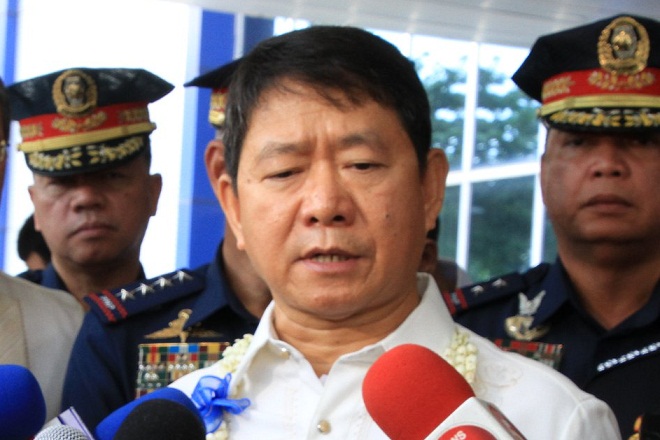Año thanks Congress for setting P5 billion aside to boost contact tracing
August 21, 2020
Interior Secretary Eduardo Año on Friday thanked the Senate and the House of Representatives for appropriating P5 billion for contact tracing under Bayanihan II.
Año said this will finally allow the Department of Interior and Local Government to significantly ramp up their contract tracing across the country to reduce the transmission of COVID-19.
“We wish to thank Senate President Tito Sotto, Senators Ralph Recto, Grace Poe, Sonny Angara and all the other senators who championed this cause as well as the members of the House of Representatives led by Speaker Allan Cayetano for this significant shot in the arm for our country’s contact tracing program,” Año said.
“This is really good news because we can now hire a maximum of 50,000 more contact tracers to meet the WHO recommended ratio of one contact tracer for every 800 people. They will supplement the 85,000 contact tracers we now have and allow us to double the number of contact tracers in LGUs with rising cases, especially in Metro Manila,” said Año, also vice-chair of the National Task Force COVID-19.
Año added this development will allow the government to meet the recommendations of Contact Tracing Czar Mayor Benjie Magalong of a 1:37 patient to close contact ratio to reduce transmission of the disease.
Takeshi Kasai, director of the WHO office for Western Pacific, and Rabindra Abeyasinghe, WHO country representative, has recommended to the DILG to increase contact tracing.
WHO has recognized as a best practice the new contact tracing system developed by Magalong which combined digital technology and interviews by contact tracers. Through the DILG, Magalong has been sharing the new system with other LGUs as part of his responsibilities as the NTF’s contact tracing czar.
The DILG chief said they will be ready to recruit the additional contact tracers as soon as the funds are released to them by the DBM.
Aggressive contact, active community involvement, and strict quarantine enforcement are the priorities now of his department.
DILG said aggressive contact tracing was the key to the success of the COVID-19 response in Metropolitan Cebu and Baguio City.
Cebu also implemented the data management system recommended by Magalong and hired encoders and analysts to study the trends.
The University of the Philippines OCTA Research Group said the replication rate in Cebu City has dropped from a high of 2 to 1.14 in the month the IATF/NTF stepped in to oversee the COVID response. From daily cases by the hundreds, the new cases have gone down to double digits, a trend that has continued even under GCQ. The positivity rate has also significantly dropped from 33 percent to 16 percent.
According to Interior Undersecretary Jonathan Malaya, technology must be used in contact tracing just like in other countries but manual contact tracing must be done hand in hand.
“All countries use both – manual and digital technology. There are also limitations in just using technology because not everybody has a smartphone which is what is required in digital contact tracing. And even those with smartphones, compatibility of android with IOS is another problem. The phone owner should also always update the status of his health which needs cooperation from users,” Malaya said. Ella Dionisio/DMS
Latest Videos
- THE UNTOLD STORY EXPERT INSIGHTS INTO THE UKRAINE
- NEGOTIATING A NEW ORDER US RUSSIA TALKS ON UKRAIN
- Ukraine: A Pawn in the Geopolitical Game? Will Trump Intervene?
- US VP VANCE CRITICIZES EUROPEAN DEMOCRACIES AT MUNICH SECURITY CONFERENCE
- UNCOVERING THE WEB OF DECEIT: CIA INFILTRATION OF THE MEDIA
- SHIFTING SANDS: TULSI GABBARD’S CONFIRMATION AND THE EVOLVING GLOBAL LANDSCAPE
- FAUCI SCANDAL: A THREAT TO GLOBAL HEALTH AND DEMOCRACY






